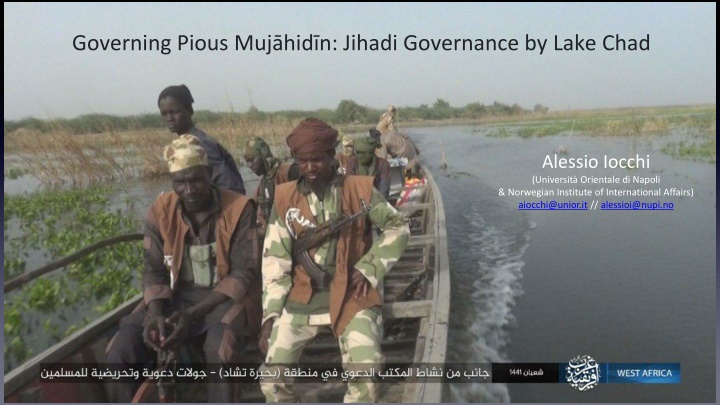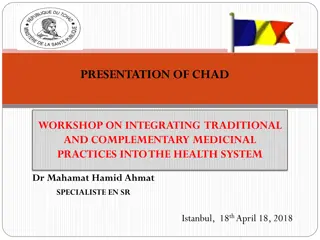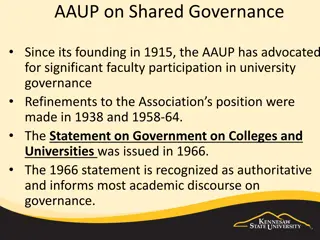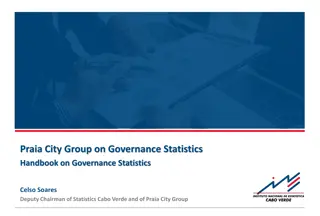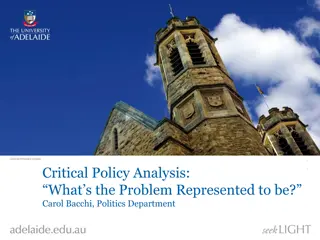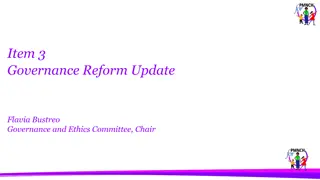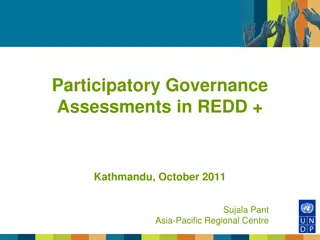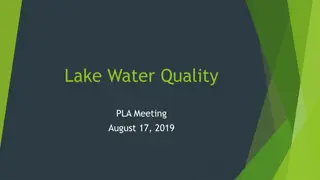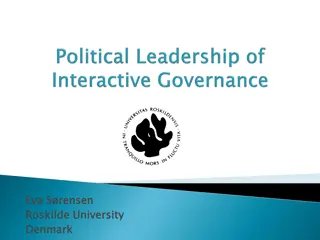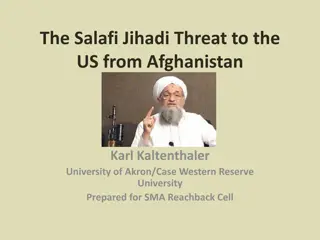Jihadi Governance by Lake Chad: Research on ISWAP's Governing Techniques
Research by Alessio Iocchi explores ISWAP's development of governing techniques in Lake Chad, emphasizing the interaction with civilian populations. The study draws on actor-network theory and the dialectic of trans-local entanglement, revealing ISWAP's adaptation to the geographical and human context as well as doctrinal influences on governance devices.
Uploaded on Oct 09, 2024 | 2 Views
Download Presentation

Please find below an Image/Link to download the presentation.
The content on the website is provided AS IS for your information and personal use only. It may not be sold, licensed, or shared on other websites without obtaining consent from the author.If you encounter any issues during the download, it is possible that the publisher has removed the file from their server.
You are allowed to download the files provided on this website for personal or commercial use, subject to the condition that they are used lawfully. All files are the property of their respective owners.
The content on the website is provided AS IS for your information and personal use only. It may not be sold, licensed, or shared on other websites without obtaining consent from the author.
E N D
Presentation Transcript
Governing Pious Mujhidn: Jihadi Governance by Lake Chad Alessio Iocchi (Universit Orientale di Napoli & Norwegian Institute of International Affairs) aiocchi@unior.it // alessioi@nupi.no
Empirically, the research on which this presentation is based shows the development by ISWAP of governing techniques and devices as well as the importance of the interaction between combatant and civilian population in ISWAP-administered areas between 2016 and 2021 Empirical findings
Methodologically, the research on which the presentation is based draws on the actor-network theory (Deleuze & Guattari 1980; Latour 2005), which stresses the primacy of nodes and connections, thus recognizing the inherent thread-like nature of contemporary societies. Methodological approach Furthermore, the article draws equally from the the dialectic of the trans-local entanglement (Freitag & von Oppen 2010) which, arguing for the study of globalisation(s) from a Southern perspective, unveils the existence of several layers of interaction through specific nodes that go beyond nation-state logics
Theoretically, the research argues two main points. First, that ISWAP did develop, structure and enforce governing techniques adapted to the Lake Chad context, moulded to match the particular geographical and human context: an highly-mobile roaming governance (Iocchi 2020; 2021). Theoretical argument Secondly, that ISWAP did develop such governance devices also as a consequence of doctrinal debates, scholarly disputes and intellectual arguments that were equally drawn from the broader jihadi-Salafi debate and from the more Syrian-context specific intra-IS debate on takf r (excommunication) (Iocchi & Brigaglia 2020).
Sources (Mostly) ethnographic fieldwork: Yobe State (Nigeria), nov. 2014; Bol et Baga Sola (Tchad), nov. 2016 - fev. 2017; Diffa, Nguigmi (Niger), ott.-dec. 2018; Diffa (Niger), ott. 2021 Combatant-produced documents and propaganda and cultural items US diplomatic cables Selected interviews with key informers (Nigeria, Tchad, Niger)
Relationship between Mamman Nur and Abubakar Shekau (2005-2018) Issue of takfir and specifically takfir musalsal (serial takfir) August 2016: Nur issues and Expos of Shekau audio file, invites combatants to perform Hijra, leave Shekau Nur questions Shekau regarding the usage of ghanima (spoils of war) Under the lenses of an aqi da discourse, a misplaced tawalli becomes comparable to an act of irk (polytheist worship)
The Dawla issue (2014-5), i.e. the gradual repositioning of allegiances and alliances in the wake of the declaration of the Caliphate in Syria Episodes of tensions Split > emergence of ISWAP Ah mad b. Umar al-H zim > takfir al- adir (excommunication of the excuser) Bin Ali > da r al-kufr al-t a ri (lapsed abode of unbelief) [to accomodate the position of Muslims living in non-sharia-ruled lands) Hazimi current within IS: g uluww (extremists) or not? Pendularity of the IS military and intellectual leadership response The decision-making processes of IS are influenced more by the pressure of al-g ula t than by the advice of the scholars. The increased relevance of the extremists and its disruptive potential are not neutralized
The Dapchi issue (feb. 2018), i.e. the kidnapping of 110 schoolgirls from an all-female secondary school in Dapchi (Yobe State), reflects the dynamic presented in the previous slide Decison-makers tend to follow the advice of al-g ula t also in local wilaya The theological/strategic rift between Nur and Shekau in the Wila ya, reflected the same dynamic of the rift between Bin al s and H zim s Caliphate. in the
Conclusions (1) al-Bag d d s Caliphate had tried to build its legitimacy and authority within the jihadist landscape vis- -vis other, theologically more accommodating organizations like al-Q ida, on an ultra-purist reading of the borders between faith (i ma n) and unbelief (kufr) Unable to propose (or to impose) a coherent and stable takfi r doctrine while controlling its potentially disruptive effects, the scholarly leadership has been marginalized by the rise to leadership positions of a battleground-forged generation of mujahidin
Conclusions (2) More takfir tends to produce a more asser- tive leadership and more motivated militants. However, it carries with it a set of potential risks, for it can either (1) multiply the number of potential targets ad infinitum, leading the movement to a strategic isolation (as has been the case with Shekau s AS- DJ), or (2) increase the internal instability of the group, by exposing every new generation of leaders to the risk of becoming the object of a new takfi r by emerging commanders (as has been the case with IS-WAP)
Conclusions (3) The governing device developed by takfir-constrained movements like ISWAP needs to be continuously accommodated between the material needs of the combatant base (on issue like ghanima) and the severe limitations posed by the takfiri-minded political decisions (see also Foucher 2021)
